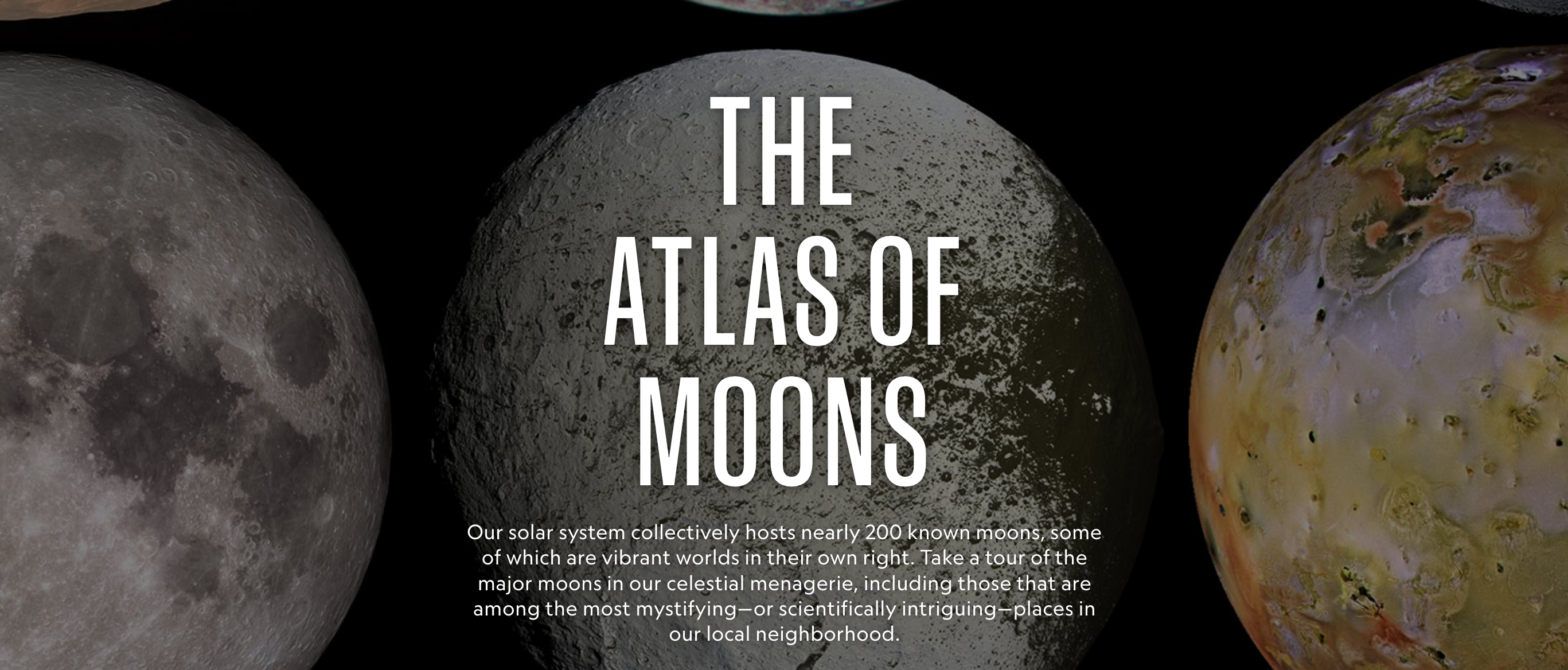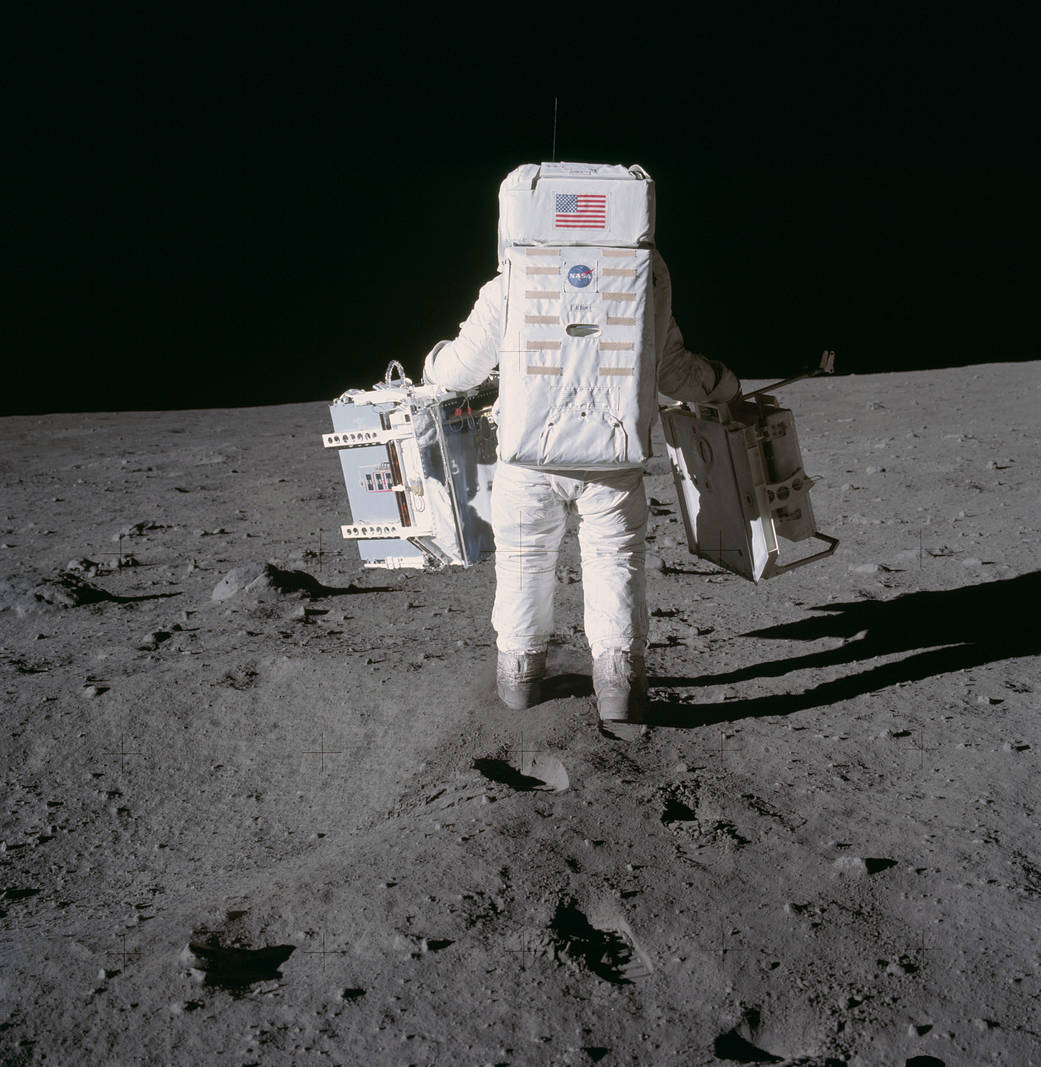-
From Apollo to Europa: The Past and Future of Lunar Exploration
July 22, 2019 / Written by: Glorie Martinez
Image from the online atlas created by National Geographic providing a comprehensive look at the moons, including those significant to the study of life in the universe, that populate our cosmic neighborhood. Source: National Geographic“We choose to go to the moon,” President John F. Kennedy proclaimed, in an iconic 1962 speech at Rice University in Texas. “We choose to go to the moon…because that challenge is one that we are willing to accept, one we are unwilling to postpone, and one we intend to win.” With this bold declaration, Kennedy galvanized public support of NASA’s fledgling Apollo program and its unprecedented goal: landing humans on the lunar surface and returning them safely to earth. Before the end of the decade, astronauts Neil Armstrong and Buzz Aldrin would become the first humans to set foot on another world.
Decades after that “one small step,” the Apollo 11 moon landing is one of the most enduring achievements in human history. On July 20, 2019, NASA recognized the mission’s 50th anniversary with a host of nationwide celebrations, ranging from interactive exhibits to live reenactments of the lunar landings.

Astronaut and lunar module pilot Buzz Aldrin moves toward a position to deploy two components of the Early Apollo Scientific Experiments Package (EASEP) on the surface of the moon during the Apollo 11 extravehicular activity. Source: NASAShowcases and festivities aren’t the only ways NASA honors the legacy of the Apollo program. Through its work in the field of astrobiology, the agency channels the same pioneering spirit into the search for life beyond Earth. For astrobiologists this endeavor is often oriented around the 200 known moons scattered throughout our solar system. From Europa, Jupiter’s moon that harbors a thriving sea beneath its icy crust, to Titan, Saturn’s orbiting behemoth obscured beneath a thick, potentially life-sustaining haze, celestial moons present some of the most intriguing prospects for discovering extraterrestrial life. For a comprehensive look at the fascinating collection of moons that populate our cosmic neighborhood, see the National Geographic interactive atlas of moons.
- The NASA Astrobiology Institute Concludes Its 20-year Tenure
- Global Geomorphologic Map of Titan
- Molecular Cousins Discovered on Titan
- Interdisciplinary Consortia for Astrobiology Research (ICAR)
- The NASA Astrobiology Science Forum Talks Now on YouTube
- The NASA Astrobiology Science Forum: The Origin, Evolution, Distribution and Future of Astrobiology
- Alternative Earths
- Drilling for Rock-Powered Life
- Imagining a Living Universe
- Workshops Without Walls: Astrovirology